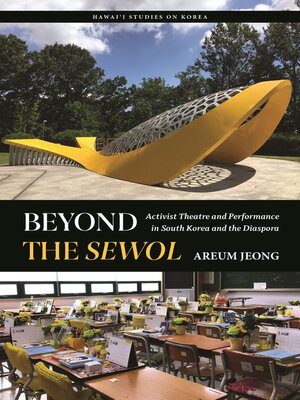Beyond the Sewol
ebook ∣ Activist Theatre and Performance in South Korea and the Diaspora · Hawai'i Studies on Korea
By Areum Jeong

Sign up to save your library
With an OverDrive account, you can save your favorite libraries for at-a-glance information about availability. Find out more about OverDrive accounts.
Find this title in Libby, the library reading app by OverDrive.



Search for a digital library with this title
Title found at these libraries:
| Library Name | Distance |
|---|---|
| Loading... |
On the evening of April 15, 2014, the Sewol ferry set sail on its overnight journey from Incheon, in northwestern South Korea, to Jeju Island, 240 miles to the south. There were 476 people on board. After receiving a distress call from a passenger onboard, Harbor Affairs at Jeju and at Jindo Island both urged the crew to prepare the passengers for evacuation. Instead, the crew instructed the passengers to stay in their cabins and wait for help. Most of the passengers heeded the instructions and died waiting for rescue.
The feelings of helplessness that many South Koreans and others felt at the sinking of the Sewol were sharpened by the ways the government mishandled the disaster, which has become the most galvanizing event in contemporary South Korean history.
Throughout this roller coaster of national disaster, public outrage, hope for change, and broken promises, an activist movement has taken shape among artists working through the medium of performance to process the disaster, commemorate its victims, and advocate for public change. Beyond the Sewol is the first book to spotlight this creative fluorescence of performative work, which spans the genres of theatre productions, exhibitions, interactive memorial events, site-specific public performances, street protests, and even commercial K-pop music videos. Korean artists, often working in collaboration with Sewol survivors and families, have created a public memory archive countering official versions of the event. These performances have provided an arena through which the project of commemorating the Sewol has been linked by activists to broader demands for changes in politics and society, especially around issues of government accountability, redress for victims, and public empathy for survivors. By identifying and analyzing a multimedia collection of performative works commemorating the Sewol, this book reveals the ways activists and artists mobilizing performative strategies have labored to transform the meaning of Sewol from an unresolved national trauma into a catalyst for creating a safer, fairer, and more caring society.







